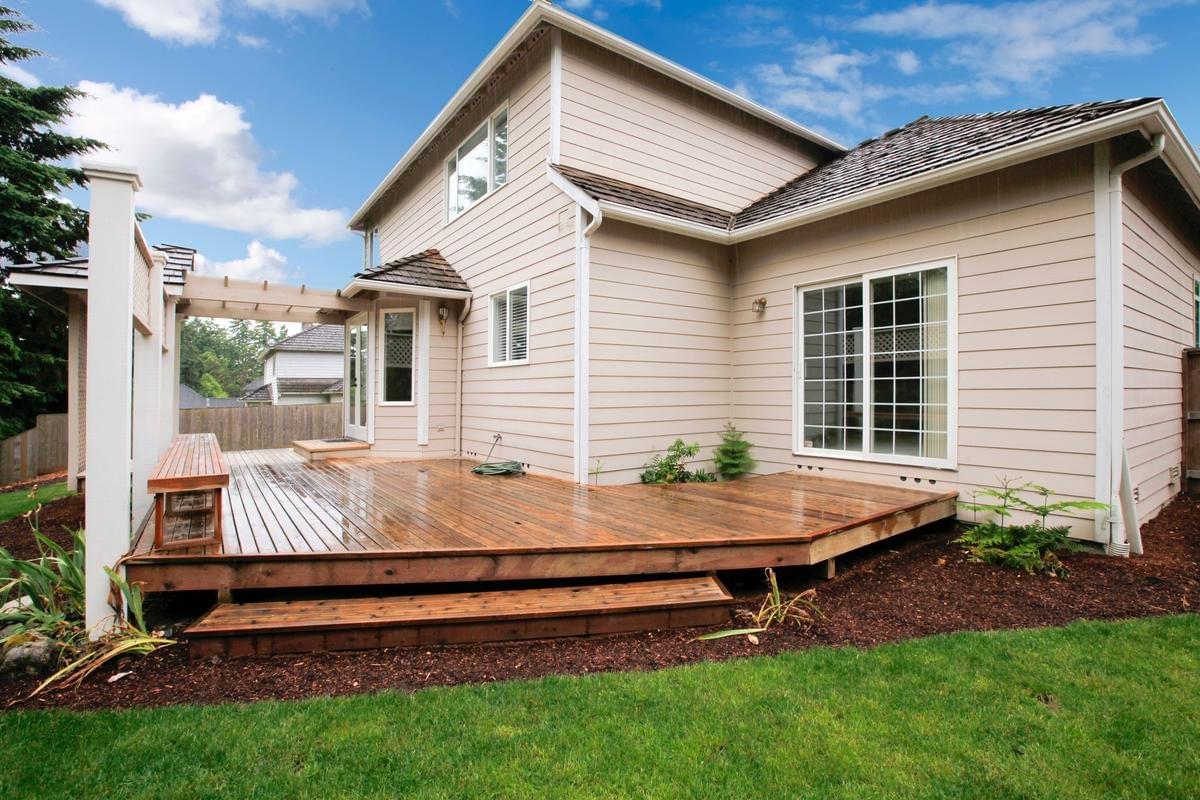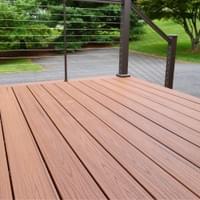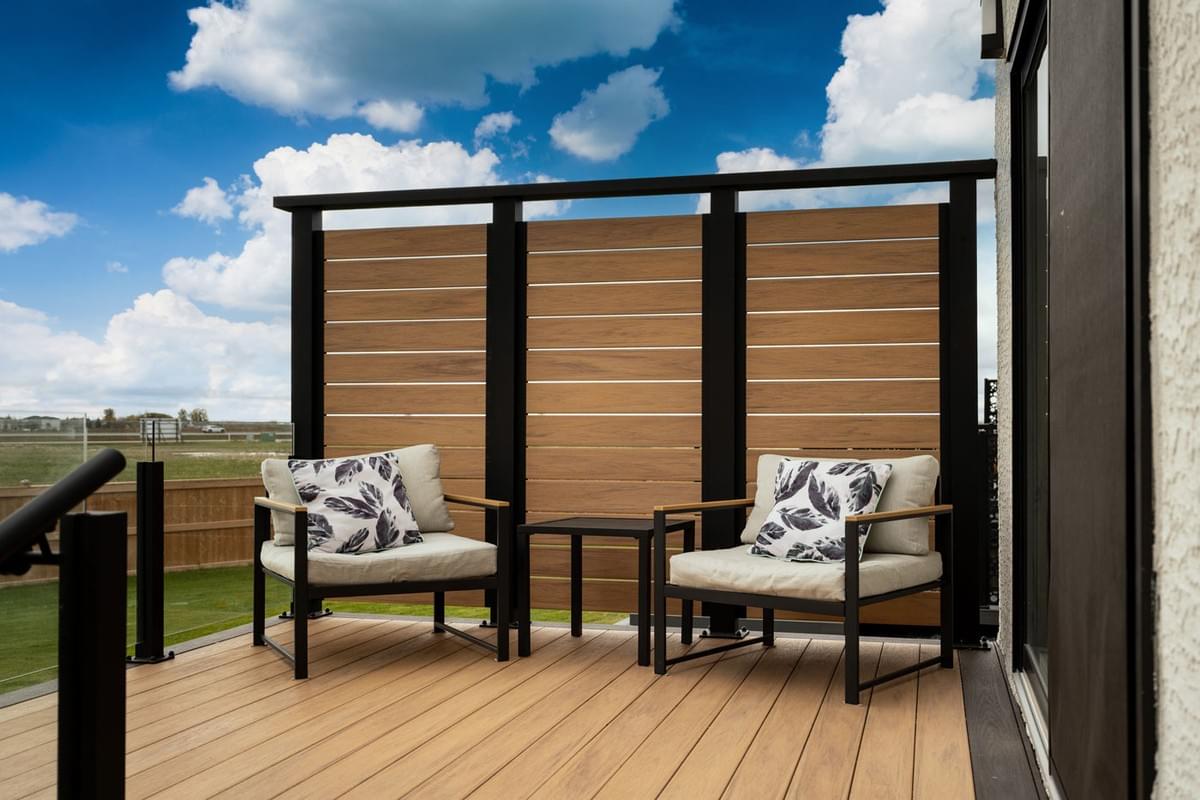Introduction
When it comes to creating the perfect outdoor space, understanding composite decking materials is key. Composite decking has gained popularity due to its durability and aesthetic appeal, but many homeowners are still uncertain about its safety features. This guide will explore the ins and outs of anti slip composite decking, helping you make informed choices for your patio decking.
Understanding Composite Decking Materials
Composite decking is a blend of wood fibers and plastic, designed to mimic the look of traditional wood while offering superior resistance to weather and wear. As one of the best decking options available today, it combines low maintenance with long-lasting performance. However, not all composite materials are created equal; some can be slippery when wet, which raises concerns about safety in outdoor spaces.
The Importance of Safety in Outdoor Spaces
Safety should always be a priority when designing your outdoor areas, especially if children or elderly individuals will be using them frequently. Slippery surfaces can lead to accidents that could easily be avoided with proper precautions like choosing the right type of deck composite decking. By investing in safe outdoor decking solutions, you ensure peace of mind while enjoying your backyard oasis.
Debunking Myths About Composite Decking
There are numerous myths surrounding composite decking that can cloud judgment for potential buyers. One common misconception is that all composite materials are slippery; however, advancements in technology have led to innovative anti slip features that enhance safety without sacrificing style. By understanding these misconceptions and focusing on the best composite decking options available, homeowners can confidently choose a product that meets both their aesthetic and safety needs.
What Makes Composite Decking Slippery?

Composite decking can be a fantastic addition to your outdoor space, but it does come with its potential pitfalls—namely, slipperiness. Understanding what contributes to this issue is crucial for homeowners looking to enjoy their patio decking safely. By delving into the surface texture and material composition, weather conditions, and the importance of maintenance, we can better navigate the slippery slopes of composite decking.
Surface Texture and Material Composition
The surface texture of composite decking plays a significant role in how slippery it can become. Most deck composite decking is made from a blend of wood fibers and plastic, which can create a smooth finish that looks great but may not provide enough grip underfoot. The best composite decking options often incorporate textured surfaces or anti slip features that enhance traction without sacrificing aesthetics.
Material composition also matters; different brands utilize varying ratios of wood to plastic, affecting both durability and slip resistance. Higher-quality anti slip composite decking products tend to have additives or coatings designed specifically for improved grip, making them a safer choice for outdoor areas. When selecting your patio decking, consider these factors carefully to ensure you’re investing in safety as well as style.
Weather Conditions Affecting Slipperiness
Weather conditions are another critical factor contributing to the slipperiness of composite decking. Rain or dew can create slick surfaces on even the best decking materials, turning an enjoyable outdoor space into an accident waiting to happen. Additionally, winter weather can exacerbate this issue; ice accumulation on smooth surfaces makes navigating your deck particularly treacherous.
Moreover, prolonged exposure to moisture can lead to mold or algae growth on your patio decking if not properly maintained—further increasing slipperiness over time. Understanding how local climate conditions impact your outdoor spaces will help you choose the right materials and prepare for seasonal changes effectively. Investing in anti slip features becomes even more vital when considering these elements.
The Role of Maintenance and Cleaning
Neglecting cleaning duties allows dirt, grime, and organic matter like leaves or moss to accumulate on the surface—creating hazardous conditions for anyone walking on it! To maintain optimal safety levels on your deck composite decking, regular sweeping and occasional power washing are recommended practices.
In addition to routine cleaning, applying specialized anti-slip treatments can greatly enhance traction over time. These products work by creating micro-textures that increase grip without altering the appearance of your beautiful outdoor space significantly. As you plan your composite decking installation or upgrade existing structures with PVC decking options or other materials, remember that upkeep is key in ensuring long-lasting safety.
Anti Slip Composite Decking: A Solution

Benefits of Anti Slip Features
The benefits of anti slip features in composite decking are manifold. First and foremost, they significantly reduce the risk of slips and falls, particularly in wet or icy conditions, making your outdoor decking safer for family gatherings or summer barbecues. Additionally, many anti slip composite deckings are designed with aesthetics in mind, ensuring that safety doesn’t come at the expense of style.
Moreover, anti slip surfaces can enhance the longevity of your deck composite decking by reducing wear and tear over time. This means fewer maintenance headaches down the line—who wouldn’t want that? Ultimately, choosing anti slip options can give you peace of mind while enjoying your outdoor oasis.
Comparing Anti Slip and Standard Composite Decking
When comparing anti slip composite decking to standard options, the differences become glaringly obvious—especially when it comes to safety features. While standard composite decking may look good and be easy to maintain, it often lacks adequate traction when wet or dampened by weather conditions. On the other hand, anti slip varieties incorporate specialized textures that provide superior grip without compromising on appearance.
Another point worth mentioning is durability; many manufacturers have developed their best composite decking lines with enhanced resistance against fading and wear from foot traffic or environmental factors. Thus, investing in anti slip options could save you from costly replacements sooner than you’d like! In short, if safety is your priority—and let’s face it; it should be—anti slip is undoubtedly the way to go.
Innovations in Anti Slip Technology
Innovation never sleeps—and neither does technology behind anti slip composite decking! Recent advancements have led to new surface treatments that enhance grip without sacrificing comfort underfoot. These innovations mean that homeowners can now enjoy a beautiful patio while feeling secure about their footing during any season.
Additionally, some manufacturers are employing eco-friendly materials in their best decking solutions while maintaining high standards for performance and aesthetics. This not only contributes positively towards sustainability efforts but also ensures consumers are getting top-notch products designed for long-term use! As we move forward into a future where outdoor living spaces continue to gain popularity, expect even more groundbreaking developments in anti slip technology for your favorite patio decking options.
Choosing the Best Decking for Safety

Homeowners often find themselves weighing the pros and cons of PVC decking versus composite decking. Understanding these options can help you make an informed decision that prioritizes safety while enhancing your patio or deck.
Evaluating Options: PVC Decking vs Composite
PVC decking is known for its resistance to moisture and insects, making it a popular choice among homeowners seeking durability. However, when it comes to anti slip composite decking, traditional composite materials often offer better traction and a more natural appearance. While both options have their merits, composite decking tends to provide a balance of beauty and slip resistance that many homeowners prefer for their outdoor spaces.
In terms of maintenance, PVC decking requires less upkeep than wood but may become slippery when wet if not designed with anti-slip features. On the other hand, deck composite decking generally has a textured surface that enhances grip underfoot, especially in rainy conditions. This makes it an appealing option for those looking to ensure their outdoor areas remain safe year-round.
Ultimately, the best choice between PVC decking and composite lies in your specific needs—consider factors like climate, usage frequency, and desired aesthetics before making your final decision.
The Advantages of Deck Composite Decking
Deck composite decking shines in several areas that are vital for safety-conscious homeowners. One significant advantage is its inherent resistance to fading, staining, and mold growth compared to traditional wood products. This means less frequent maintenance and greater longevity—key components in ensuring your outdoor space remains safe over time.
Moreover, many brands now offer anti slip features integrated into their deck composite offerings—this innovation helps prevent slips even during inclement weather conditions. With various textures available on the market today, you can choose a finish that aligns with your style while keeping safety at the forefront of your design choices.
Another noteworthy advantage is sustainability; most best composite decking products are made from recycled materials which contribute positively to environmental health while providing durable performance outdoors. When you choose deck composite materials over alternatives like PVC or treated wood, you're not just selecting safer options but also making eco-friendly decisions.
Popular Brands Offering Safe Outdoor Decking
When searching for the best decking solutions on the market today, there are several reputable brands known for their commitment to safety and quality in outdoor spaces. Trex is one standout brand offering anti slip composite decking that combines innovative technology with stylish designs perfect for patios or decks alike. Their products are engineered with durability in mind while also focusing on reducing environmental impact.
Another notable name is TimberTech; they provide a range of deck composite materials featuring advanced slip-resistant surfaces ideal for any climate condition you might encounter outdoors. Their dedication to quality ensures that customers receive some of the best composite decking available today without sacrificing safety or aesthetic appeal.
Lastly, Fiberon offers attractive options with built-in anti-slip features—making them an excellent choice if you're looking for patio decking solutions that won't compromise on style or security underfoot! With these brands leading the charge in safe outdoor materials innovation, finding suitable options becomes easier than ever before.
Composite Decking Installation Tips

Proper installation not only enhances the longevity of your deck but also minimizes hazards associated with slippery surfaces. Whether you’re opting for anti slip composite decking or standard options, adhering to installation guidelines will guarantee a safe outdoor space.
Proper Installation for Safety and Performance
To achieve the best results with your deck composite decking, following manufacturer instructions meticulously is crucial. This includes accommodating expansion gaps and ensuring that boards are laid out correctly to prevent warping or buckling over time. A well-installed deck not only looks great but also provides a stable, safe surface for family gatherings or patio lounging.
Moreover, when selecting your materials for outdoor decking, consider the specific requirements of anti slip composite decking products which may have unique installation needs. For instance, some brands offer specific fasteners designed to maintain the integrity of their anti-slip features while others may require special techniques during installation. Always remember that taking extra care during this phase can save you from future headaches.
Importance of Slope and Drainage
One often overlooked aspect of composite decking installation is proper slope and drainage management. Ensuring that your patio decking has a slight slope away from structures will help water runoff efficiently, preventing pooling which can lead to slippery conditions. Without adequate drainage, even the best composite decking can become hazardous after rain or snow melts.
Additionally, implementing effective drainage solutions like gutters or drains around your outdoor space can further enhance safety by keeping surfaces dry and reducing maintenance needs over time. Remember that moisture accumulation is a primary contributor to slippage on any type of decking material—be it PVC decking or traditional wood! Therefore, addressing slope during installation should be at the forefront of your planning process.
Selecting the Right Fasteners and Accessories
Choosing appropriate fasteners and accessories is essential for maximizing both safety and durability in your composite decking project. When working with anti slip composite decking options specifically designed for enhanced grip, using compatible fasteners ensures that these features remain intact over time. Look for stainless steel screws or hidden fastening systems that minimize visible hardware while providing strong support.
In addition to fasteners, don’t forget about other accessories such as spacers and joist tape which play vital roles in maintaining an optimal structure beneath your deck surface. These additions can help prevent moisture damage by creating barriers between wood joists and composite materials—essentially extending the life of your outdoor investment! Selecting quality components will ultimately contribute to achieving one of the best decks possible.
Real World Experiences with Composite Decking

Many homeowners have shared their stories about the slippiness of traditional deck composite decking, especially during rainy or icy conditions. These testimonials highlight the importance of choosing the right materials and features, like anti slip composite decking, for safety in outdoor spaces.
Homeowner Testimonials on Slipperiness
Homeowners across the country have reported mixed feelings about their patio decking experiences. Some have found that standard composite decking can become quite slippery when wet, leading to concerns about safety for children and pets. However, those who opted for anti slip composite decking often rave about its superior grip and stability, providing peace of mind during inclement weather.
One homeowner from Florida noted that after switching to anti slip features in their deck composite decking, they felt much more secure hosting family gatherings by the pool. Another couple in Oregon shared how their previously slick deck transformed into a safer space after installing textured anti slip materials—no more slips or falls! These testimonials underscore the necessity of considering safety features when selecting the best decking for your home.
Case Studies: Successful Installations
Several case studies illustrate how choosing the right type of outdoor decking can lead to successful installations that prioritize both aesthetics and safety. For instance, a community center in New York opted for anti slip composite decking around its pool area after receiving numerous complaints about slipping incidents with PVC decking alternatives. The installation not only enhanced safety but also added an attractive finish that blended seamlessly with the surrounding landscape.
In another example, a family-owned restaurant in California replaced their standard patio decking with innovative anti slip options following an unfortunate accident involving a customer slipping on wet surfaces. Post-installation feedback indicated increased patron satisfaction as diners felt more secure while enjoying meals outdoors—definitely a win-win scenario! These case studies serve as powerful reminders that investing in quality materials pays off in both functionality and user experience.
Professional Insights from Composite Decking Inc
They recommend selecting high-quality anti slip features while also ensuring correct slope and drainage during installation to avoid pooling water on surfaces. Their insights suggest that combining these elements leads not only to safer decks but also enhances longevity and performance over time.
Additionally, experts note that innovations in best composite decking technologies are making strides toward improving surface textures designed specifically to combat slipperiness without sacrificing style or durability. With advancements like these, homeowners can confidently choose patio options tailored for both beauty and safety—an essential consideration for any outdoor space! As trends evolve toward greater emphasis on safe living environments, it's clear professional guidance plays an invaluable role in achieving optimal results.
Conclusion
Anti slip composite decking has emerged as a popular choice for homeowners looking to enjoy their patio decking without the fear of slips and falls. With proper composite decking installation and maintenance, you can create a safe and inviting outdoor space that stands the test of time.
Summary of Composite Decking Safety Practices
To maximize safety on your deck, understanding the characteristics of anti slip composite decking is crucial. Regular maintenance, including cleaning and inspecting for wear, can significantly reduce slipperiness caused by dirt or algae buildup on your deck composite decking. Additionally, ensuring proper drainage and slope during installation will help prevent water accumulation that could lead to hazardous conditions.
Future Trends in Anti Slip Materials
As technology evolves, we can expect exciting advancements in anti slip materials for outdoor decking solutions. Manufacturers are continuously innovating to create more effective textures and coatings that enhance grip without compromising aesthetics. The future may also bring eco-friendly options that combine sustainability with safety features—making it easier than ever to choose the best composite decking for your home.
Making Informed Choices for Outdoor Decking
When selecting patio decking options, consider both functionality and style to ensure you make an informed choice that suits your lifestyle. Comparing PVC decking with anti slip composite decking allows homeowners to weigh durability against performance in wet conditions effectively. By staying informed about products from reputable brands offering safe outdoor decking solutions, you can confidently invest in a beautiful yet secure space for family gatherings or quiet evenings under the stars.
